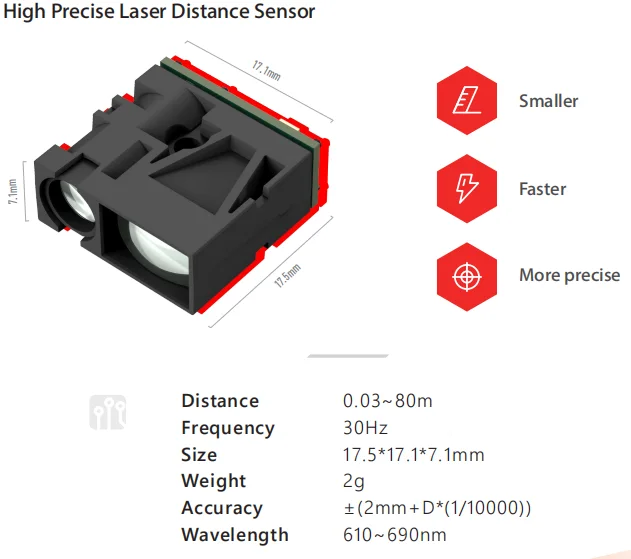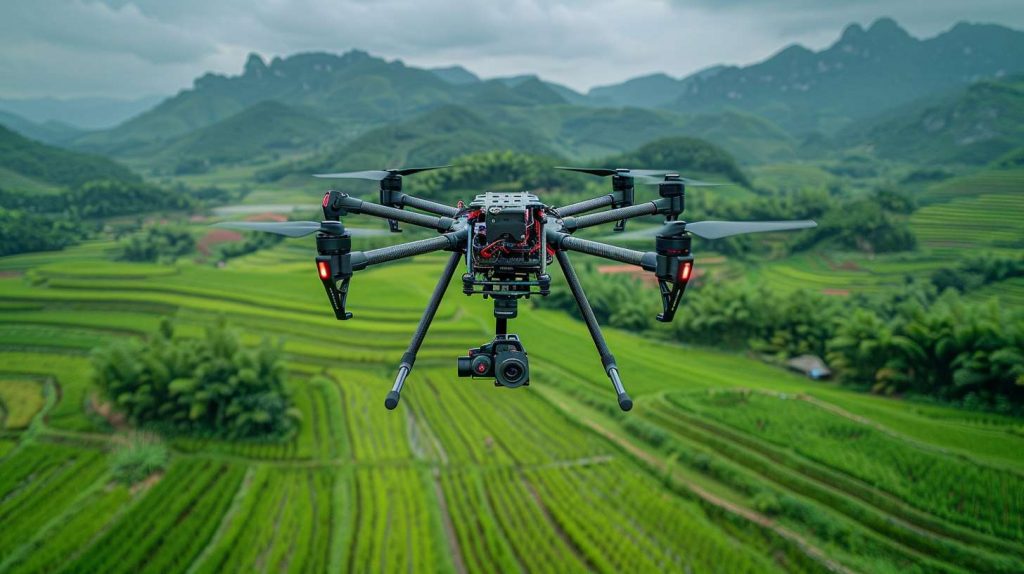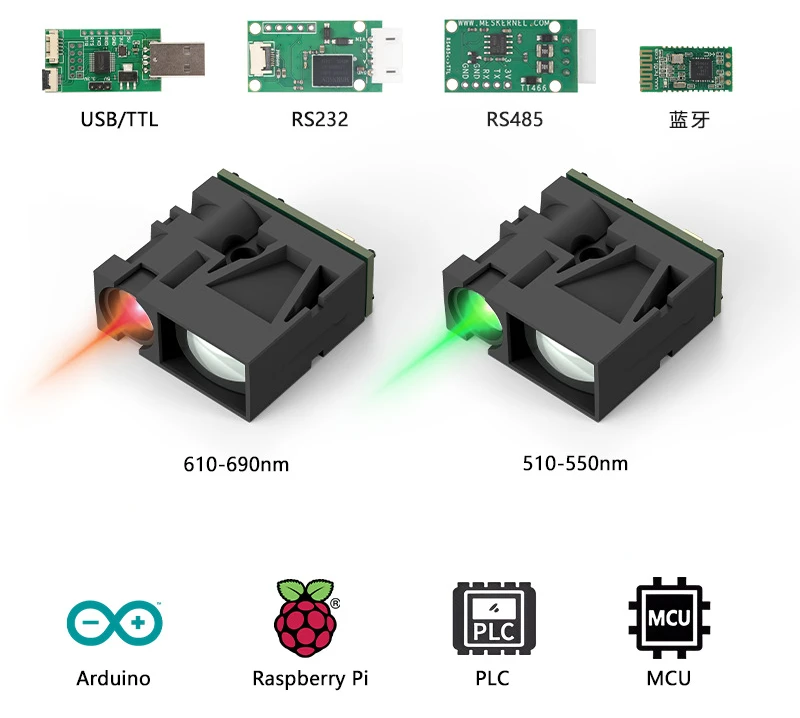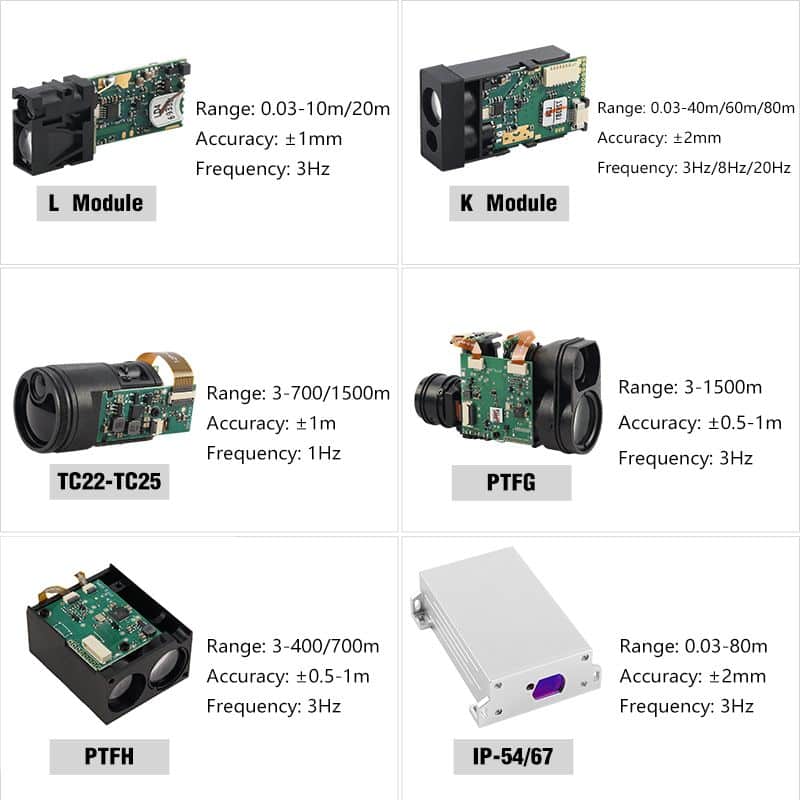Dans le monde en évolution de l'automatisation, de la robotique et de la détection intelligente, les capteur de distance se distingue comme un composant fondamental. Que vous construisiez une machine industrielle ou que vous fassiez du prototypage avec un microcontrôleur, il est essentiel de choisir le bon module et de comprendre ses protocoles de communication.
1. Qu'est-ce qu'un module de détection de distance ?
Un module de détection de distance est un système intégré de capteurs conçu pour mesurer la distance entre le capteur et un objet cible à l'aide de technologies telles que le laser (LiDAR), ultrasonique, infrarouge ou Temps de vol (ToF). Ces modules sont souvent livrés avec des composants d'interface pour une intégration directe avec des cartes de développement ou des systèmes industriels.
Pour une vue d'ensemble des différents types de capteurs, consultez notre guide sur les Détecteurs de distance analogiques et ToF.
2. Interfaces de communication communes
Pour choisir le bon module, il faut d'abord comprendre les interfaces de communication, qui affectent la compatibilité, la portée et les performances en temps réel.
UART (récepteur/émetteur asynchrone universel)
RS485
- Cas d'utilisation: Automatisation industrielle où la longue portée et la résistance au bruit sont requises.
- Pour: Signalisation différentielle, prend en charge les configurations multipoints.
- Exemple: Laser industriel télémètre avec sortie RS485 (voir tableau ci-dessous).
Bus CAN
- Cas d'utilisation: Automobile, robotique et systèmes nécessitant une communication multi-appareils.
- Pour: Robuste, gestion des erreurs, normalisé dans le contrôle industriel.
| Interface | Idéal pour | Couche protocole | Longueur maximale du câble |
|---|
| UART | Arduino, Raspberry Pi | Série de base | ~1 mètre |
| RS485 | PLC, capteurs industriels | Semi-duplex, différentiel | ~1200 mètres |
| CAN | Véhicules, robots industriels | Multi-maître, basé sur l'arbitrage | ~40 mètres |
3. Intégration avec les cartes de développement les plus courantes
Les modules de détection de distance peuvent être facilement intégrés dans diverses plateformes. Voici comment :
Exemple Arduino
De nombreux modules UART et I2C peuvent être branchés directement sur les cartes Arduino. Des bibliothèques comme NewPing et Adafruit VL53L0X simplifient l'intégration.
#include
SoftwareSerial mySerial(10, 11) ; // RX, TX
void setup() {
Serial.begin(9600) ;
mySerial.begin(9600) ;
}
void loop() {
if (mySerial.available()) {
int distance = mySerial.read() ;
Serial.println(distance) ;
}
}
Exemple de Raspberry Pi
Les modules dotés d'une sortie UART ou USB sont prêts à l'emploi sur le Raspberry Pi à l'aide de l'interface Python. en série module. Vous pouvez trouver des exemples fournis par la communauté sur Raspberry Pi Forums.
4. Choisir le bon module : Développement ou utilisation industrielle
| Cas d'utilisation | Caractéristiques à rechercher | Module recommandé |
|---|
| Bricolage / Hobby | Interface UART/I2C, compacte, faible consommation d'énergie | LDL |
| Robotique | Haute précision, ToF ou LiDAR, données en temps réel | LDL-S |
| Industriel | RS485/CAN, IP67, longue portée, boîtier robuste | PTFS-P4 |
Conseil: Vérifiez toujours la compatibilité avec le niveau logique de votre système (3,3V ou 5V) et la plage de mesure requise.
5. Tableau de comparaison de la sélection des modules



 capteur de distance analogique sortie
capteur de distance analogique sortie
6. Conclusion
Comprendre les modules de détection de distance va au-delà du choix d'une marque - il faut prendre en compte les protocoles, l'environnement et les méthodes d'intégration. Que vous utilisiez un module de détection de distance RS485 pour les environnements industriels difficiles ou un module de mesure de distance UART pour le prototypage, un choix judicieux peut accélérer la réussite de votre projet.
🔗 Autres lectures et ressources